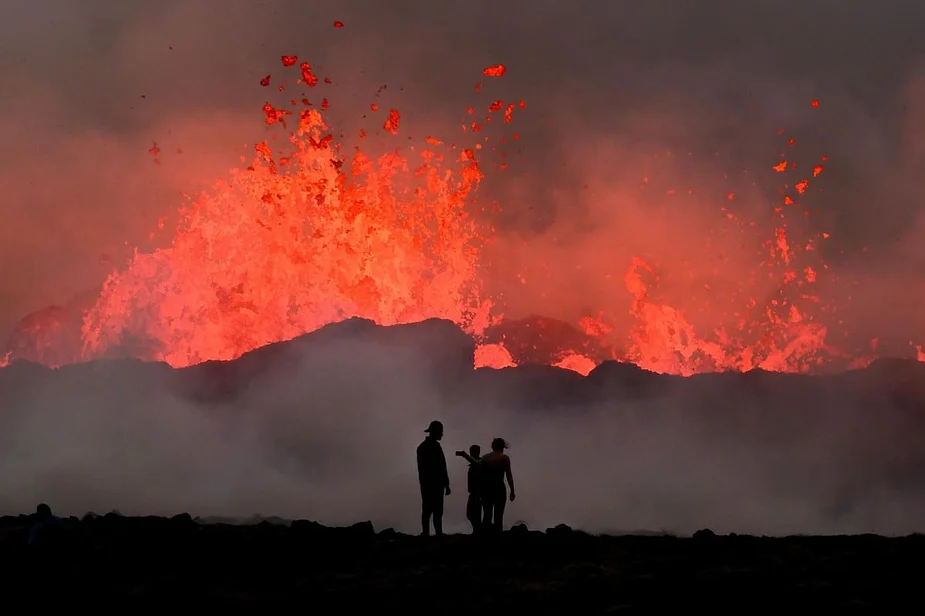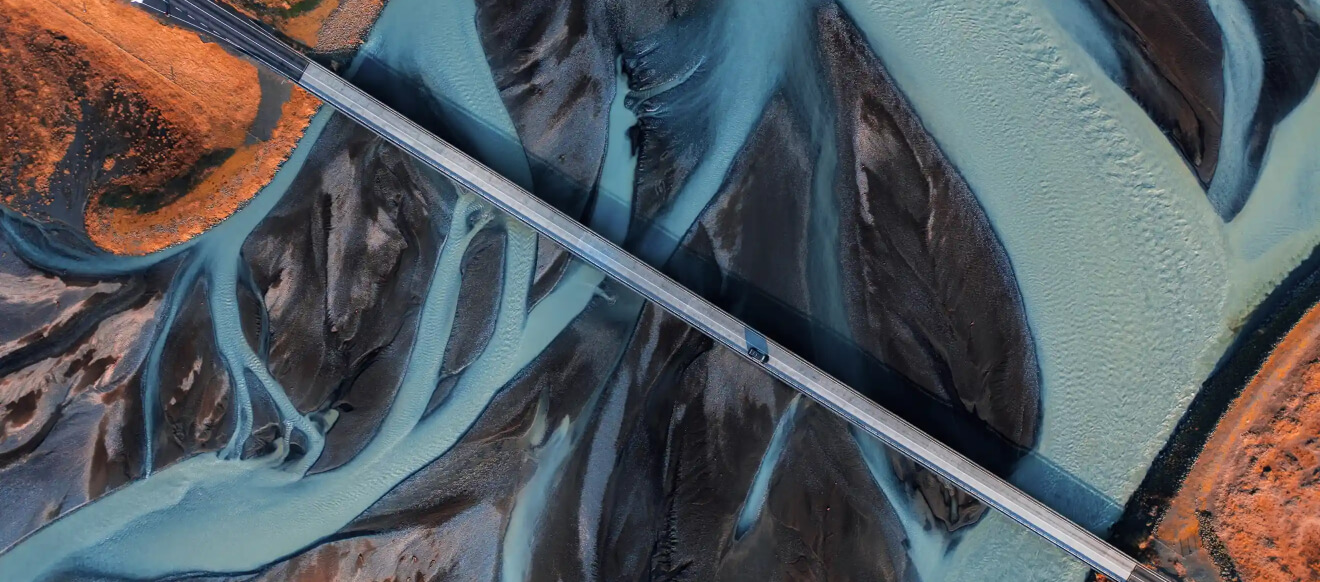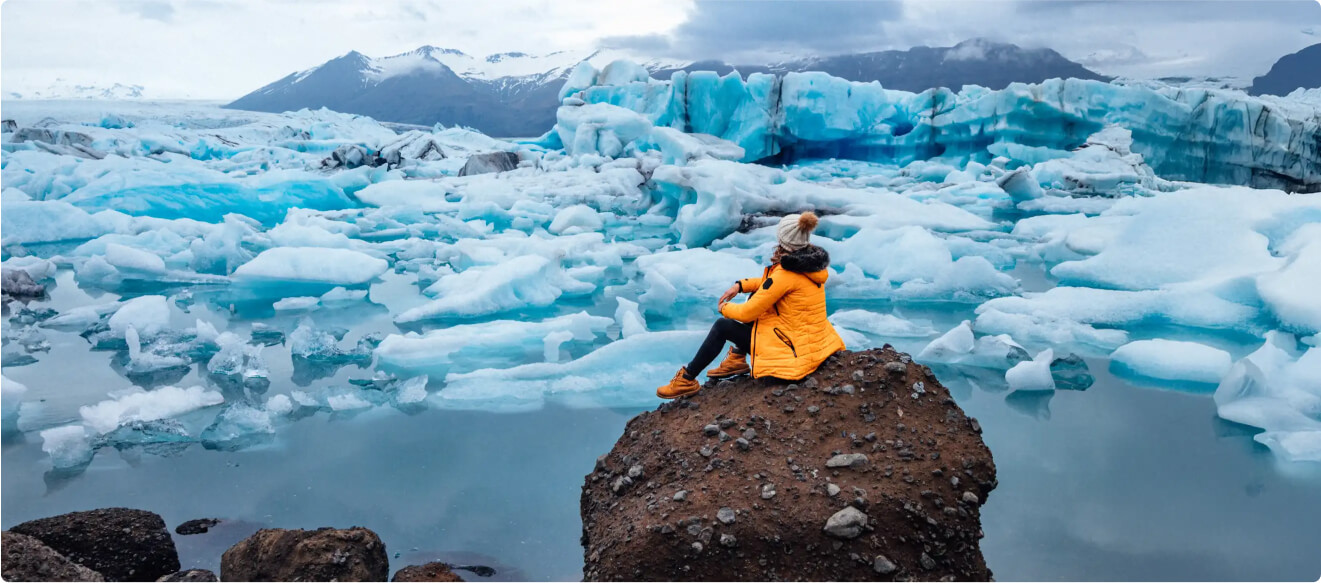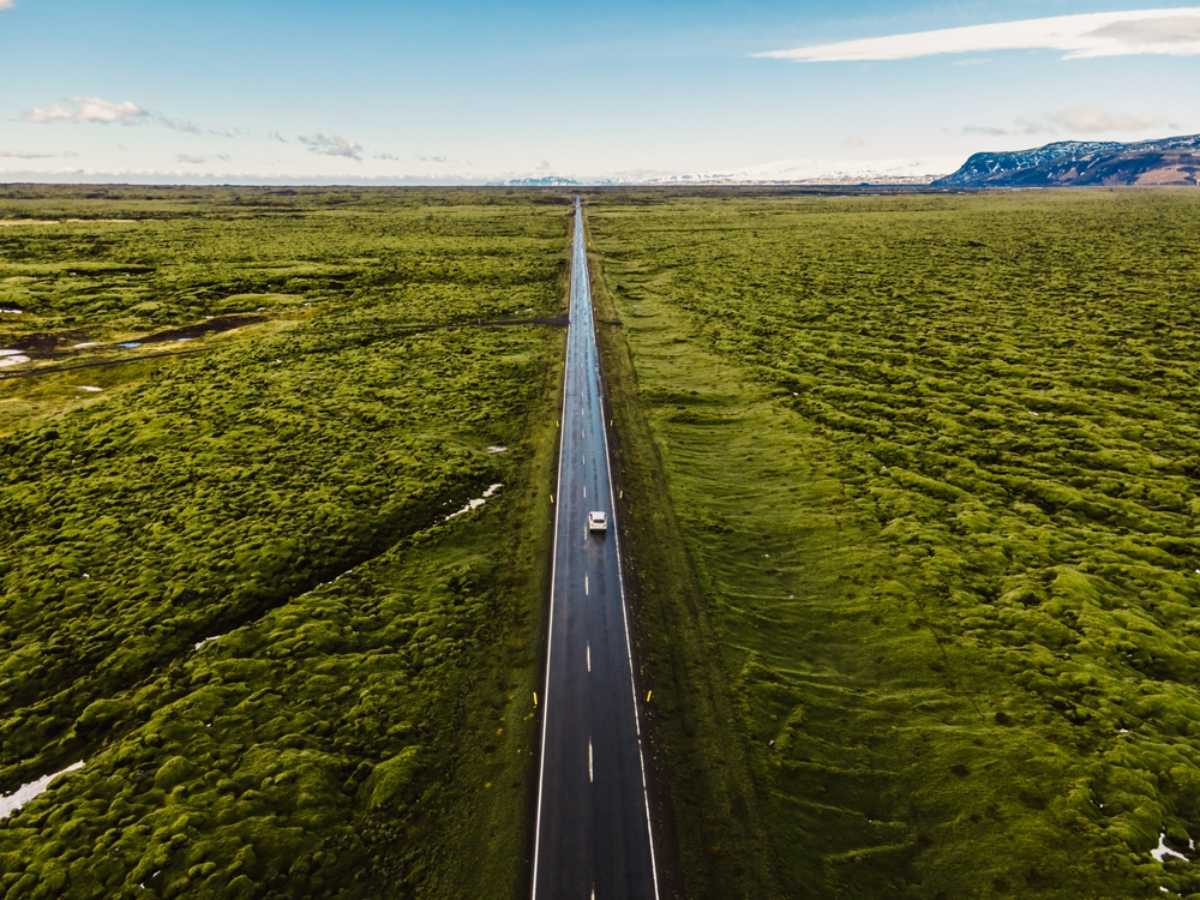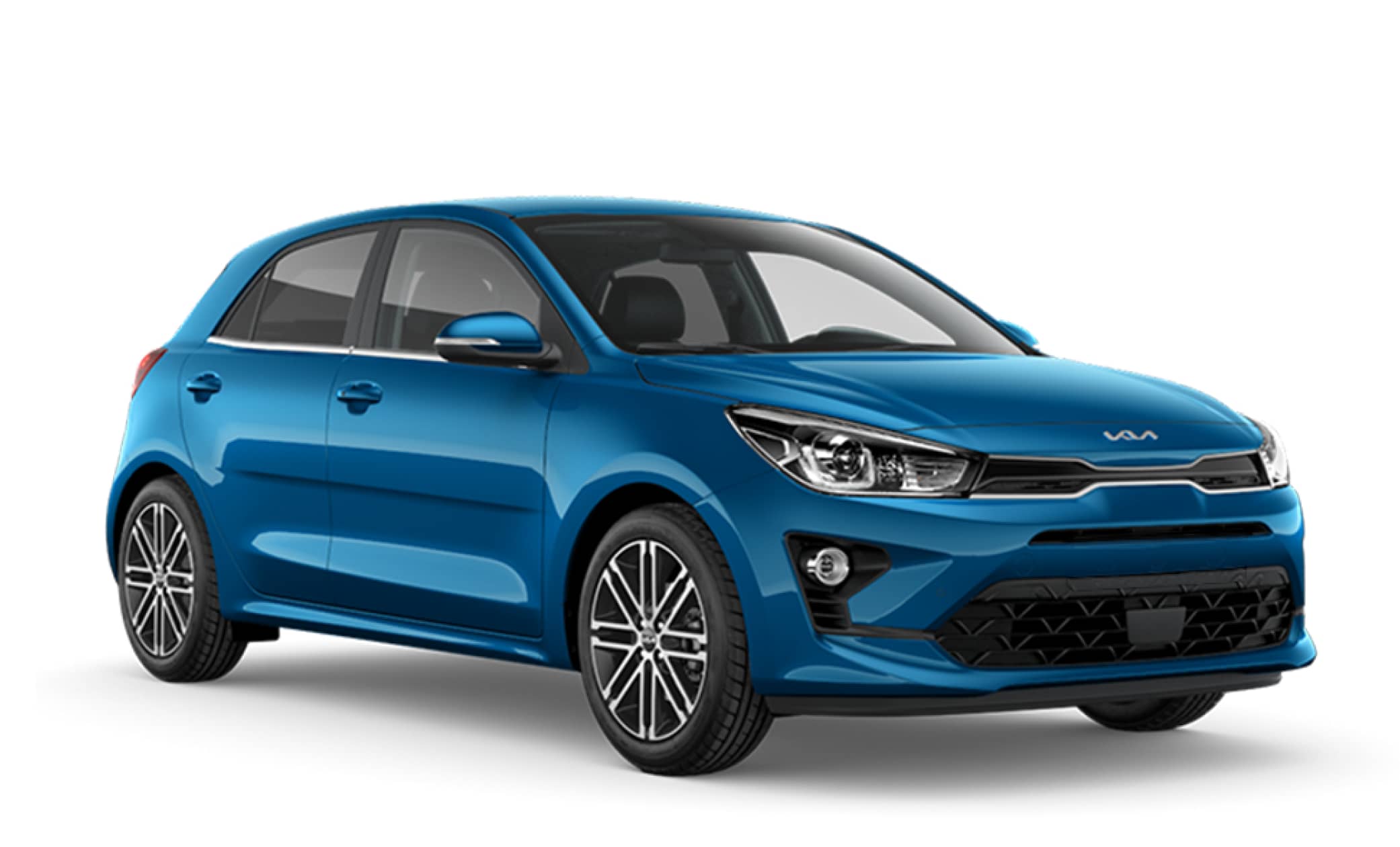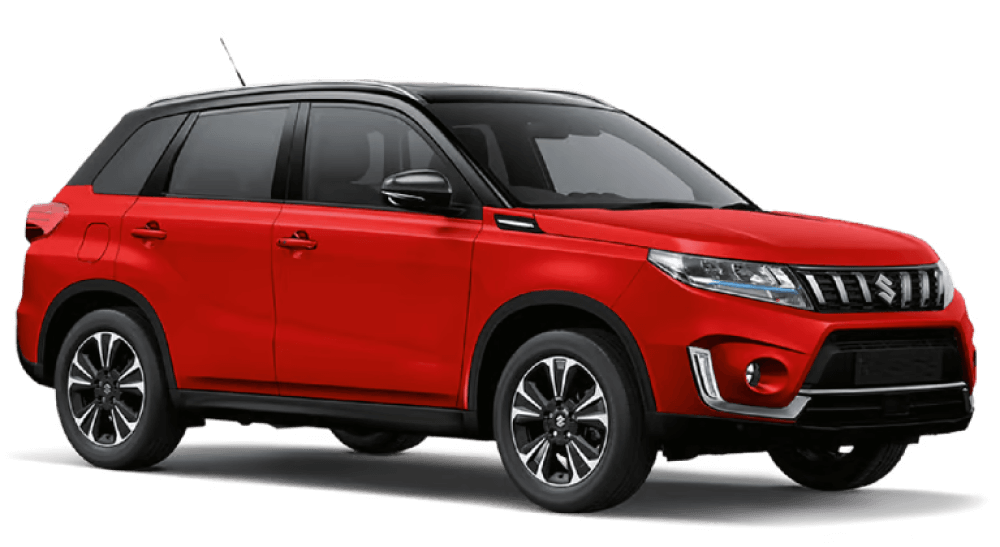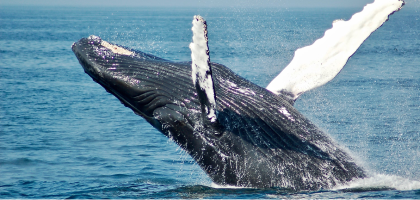Volcanoes aren’t new to Iceland, but in recent years, there have been more eruptions than the typical average. While the recent eruptions have been relatively harmless for visitors, it’s essential to know some safety tips for volcanic eruptions, especially around navigating the country when they happen.
You may know the answer to “If a volcano erupts near your home, how can you stay safe,” but if you’re traveling, the answer can be much different. The following will help you stay safe and enjoy your trip, even if there is an eruption.
Why Volcanic Safety Matters When Driving in Iceland
Knowing how to stay safe during a volcanic eruption is essential for everyone who chooses to visit this volcanic country. There’s no telling when a volcano may erupt, so you should always be prepared for what to do during a volcano. Depending on the type of eruption, visitors may experience ash clouds, gas emissions, and lava flows that can affect visibility, road access or even your car rental in Iceland.
Volcanoes can be volatile and unpredictable, so planning a trip to Iceland requires being prepared in the event one should erupt.
Types of Volcanic Eruptions You Might Encounter
Iceland is located along the Mid-Atlantic Ridge, where the North American and Eurasian tectonic plates converge. This leads to higher levels of volcanic activity. Iceland experiences several main types of eruptions: explosive, effusive, fissure, and sub-glacial. The good news is, the country does well monitoring the active volcanoes with seismometers, GPS measurements, and satellite imagery. When eruptions occur, gas meters are also used.
Here's a map of the latest eruptions in Iceland:
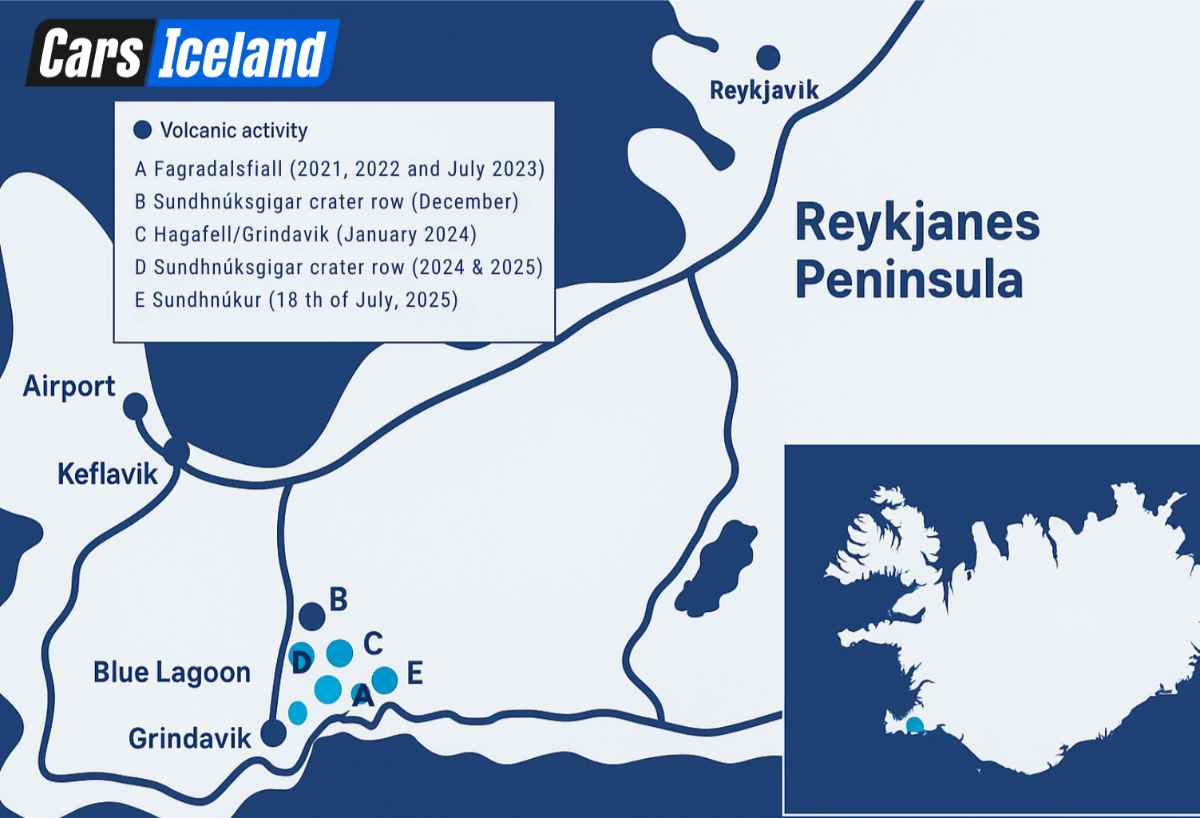
Is It Safe to Drive During a Volcanic Eruption?
This is one of the first questions visitors have when they hear about an eruption. However, the answer varies, depending on numerous factors, such as:
- The location of the eruption
- Its severity
- Ash fall, lava flow, and other physical aspects of the eruption
For instance, a fissure eruption like the recent eruptions on Reykjanes Peninsula only affects roads near the eruption site. However, explosive eruptions are more likely to cause much more disruption to travel. Driving in ashfall, like during the Eyjafjallajökull eruption, wasn’t exactly a recipe for great visibility, was it?
The authorities in Iceland are well known for monitoring volcanic conditions to send out alerts and travel warnings when necessary. They will issue road closures based on volcanic ash fall, lava flows, flooding, and dangerous volcanic gases. As long as you follow their advice, it is perfectly safe to drive during a volcanic eruption.
How to Prepare Before Your Trip to Iceland
Gathering safety tips for volcanic eruptions before you go will ensure you are prepared should it happen. However, keep in mind that most people can travel throughout Iceland without worrying about volcanic eruptions and their effects.
Check Volcanic Alerts and Road Conditions
The best way to prepare for the potential of a volcanic eruption is to check alerts on SafeTravel.is or vedur.is. These two websites keep tabs on the possibility of eruptions and will give you up-to-date information when they do happen. You should also stay on top of the latest road conditions. These conditions are updated regularly based on weather and other potential hazards.
Choose the Right Vehicle for Iceland’s Terrain
While you can easily drive in Iceland with a 2WD vehicle, if you want to be prepared to drive in the event of a volcano, renting a 4x4 is typically the best choice. One with more ground clearance is also helpful if the conditions require it. Renting a 4x4 with good ground clearance will also open up more possibilities for your itinerary, including driving on F-roads.
In addition to opting for a 4x4 vehicle, make sure you get extra insurance to protect yourself. Most rental companies include basic insurance, but you should also consider gravel insurance, sand and ash insurance, and more to minimize the risk of extra costs when you return the car. These insurance options are valuable, whether or not a volcano erupts during your trip.
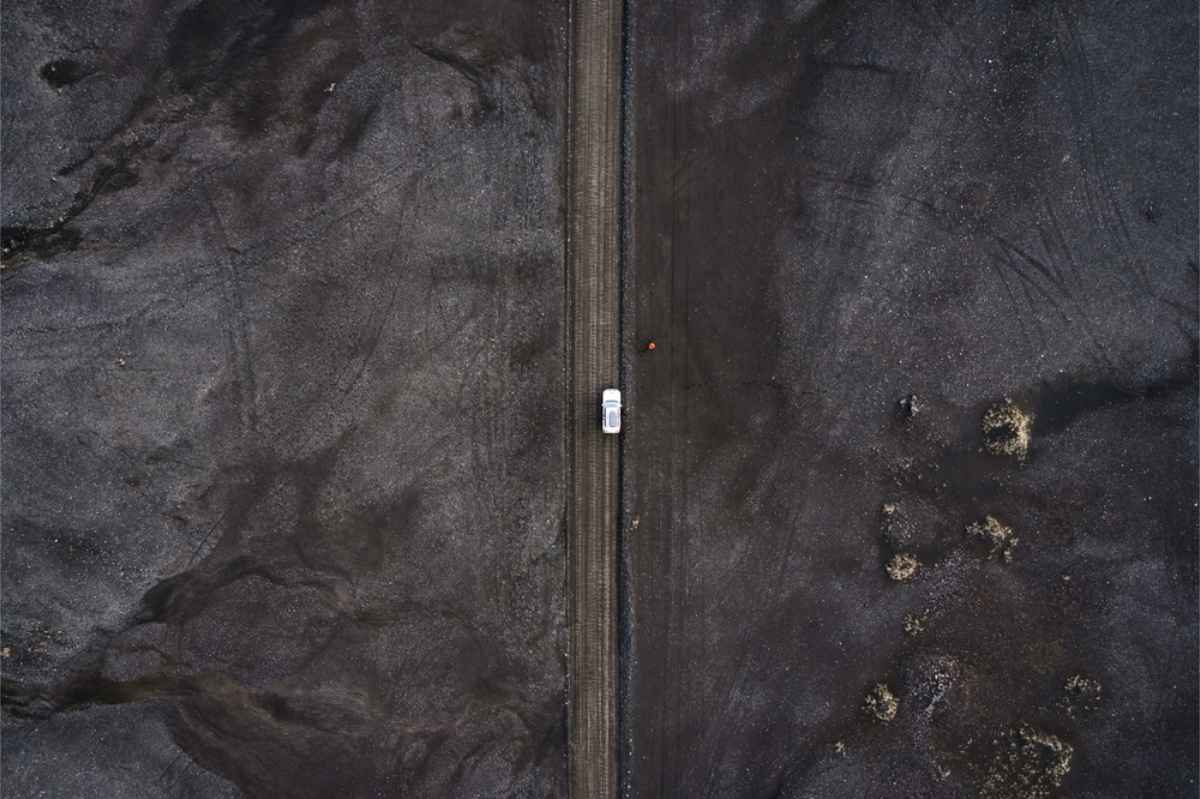
Understand Local Emergency Protocols
First and foremost, always check the alerts on SafeTravel.is and monitor the weather website for the latest updates on volcanic eruptions. In some cases, they may use text alerts to notify individuals in the affected area or to proceed with an evacuation plan. You can also get notifications by registering your travel plans with the SafeTravel website. If you need help, dial 112, Iceland’s emergency line.
If you are in an area affected by a volcanic eruption, you will receive evacuation instructions from the local law enforcement, Search and Rescue personnel, or your accommodations. Follow their instructions closely to maintain safety and avoid causing bottlenecks that can affect others.
Once an eruption occurs, please respect all road closures and other restricted areas. The Icelandic authorities will close off any areas rendered dangerous by the eruption. Gas emissions, lava flows, and ash fall can all affect whether areas are restricted to the general public.
Vehicle Safety Checklist for Volcanic Conditions
Before driving in Iceland, these safety tips for volcanic eruptions will ensure you have everything you need if a volcanic eruption does occur during your trip. In addition to making sure your rental agency provides a vehicle in good condition, there are several other ways to stay safe during a volcano event.
Must-Have Equipment for Your Rental Car
It’s always best to keep your fuel tank at least half full during your journey around Iceland. When you consider preparing for a volcanic eruption, this is especially important in case fuel stations aren’t available. You should also carry extra windshield washer fluid and microfiber cloths for cleaning.
How to Protect the Engine and Cabin From Ash
If you are in an area experiencing ash fall due to a volcanic eruption, it’s best to avoid starting the vehicle. Starting the car will draw the ash into the air intake and ultimately into the engine, causing the vehicle to stall. You should also consider temporarily covering the air intake with a plastic bag to keep any ash fall out of the vehicle.
Close windows/doors, and while driving use the recirculation button to circulate air through the interior without drawing air that may be filled with ash into the car. If you have driven through ash fall, let the rental agency know so they can replace the air filters in the vehicle to prevent clogs. Once you are through the ash fall, rinse off the vehicle, but don’t wipe it with anything because the ash can scratch the paint.
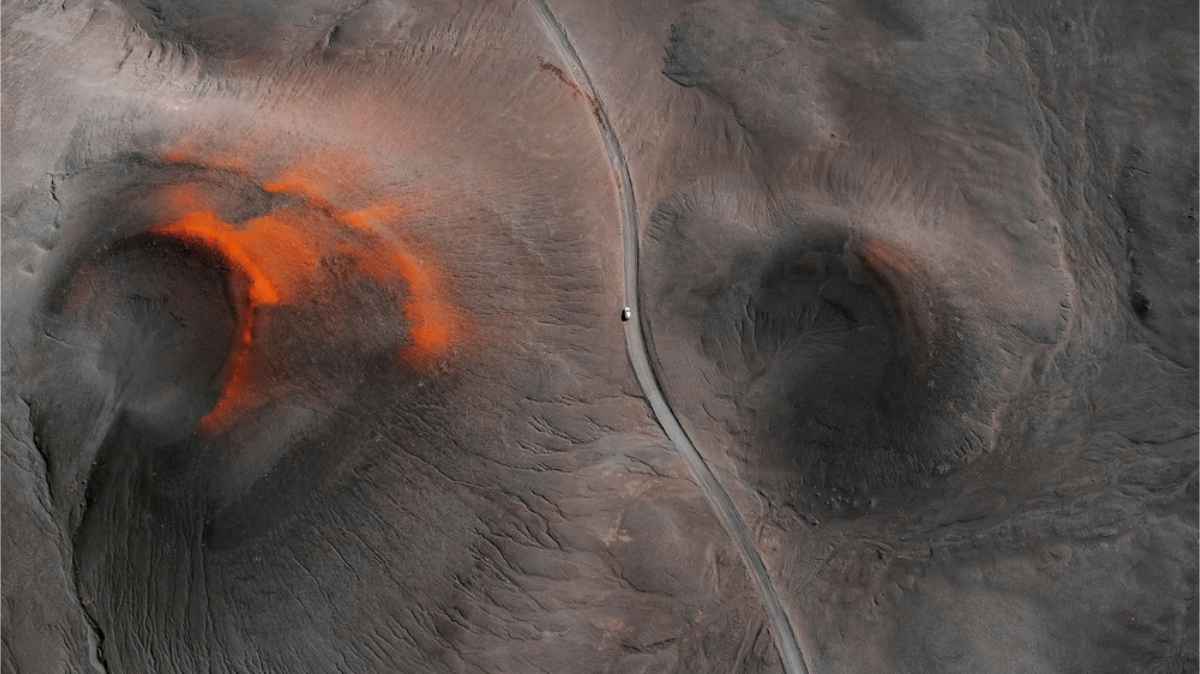
Essential Gear to Carry in Your Rental
One of the most important safety tips for volcanic eruptions is to make sure you carry essential gear to keep yourself and your fellow travelers safe during your journey.
Emergency Supplies for the Road
Packing emergency essentials will help you remain safe if you have to evacuate from an eruption. Some of the items you should have include in your "volcano emergency kit":
- A flashlight with extra batteries
- Warm clothing
- Food and water
- A power bank
- A GPS system
- A first aid kit
- A paper map
- A battery-operated radio
- Googles and dust mask
Personal Protective Equipment (PPE)
There is also some volcano-specific gear you should consider to protect yourself from volcanic ash, such as an N95 or P2 mask to protect against volcanic ash and gases and goggles or wrap-around safety glasses for eye protection.
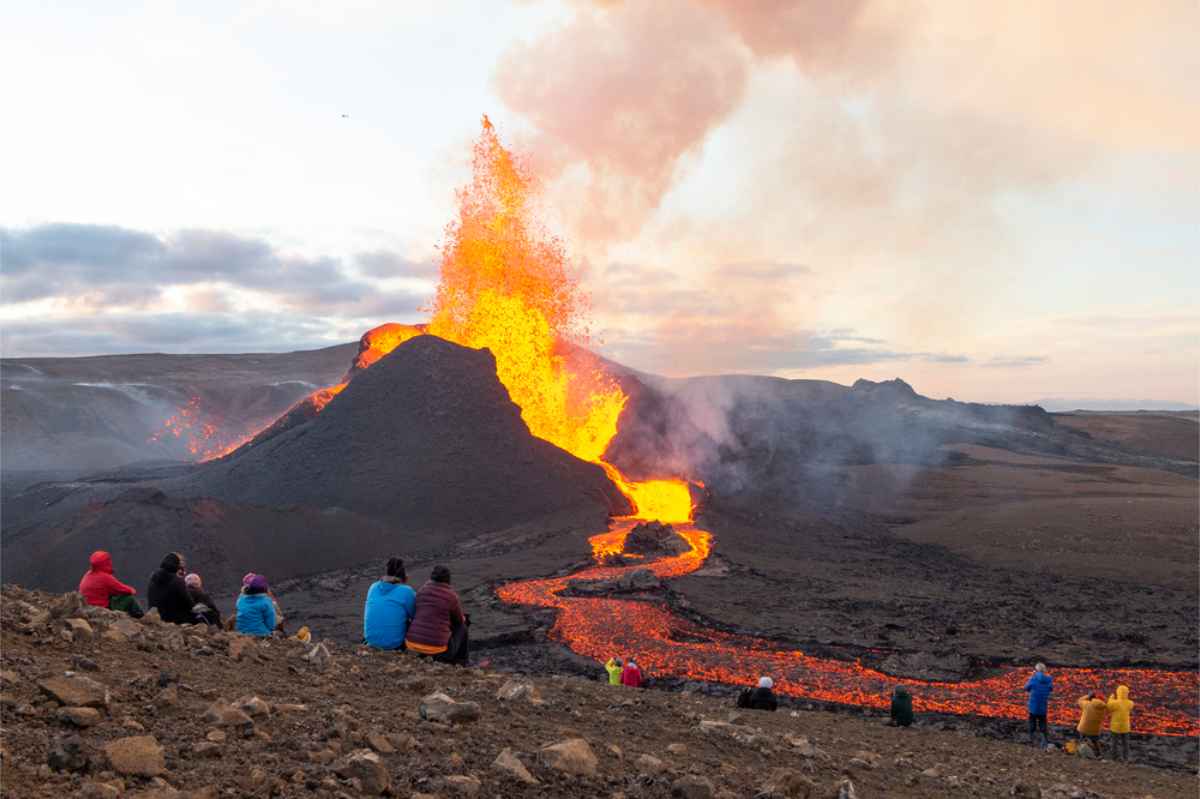
How to Stay Informed: Alerts, Apps, and Radio Channels
The SafeTravel website and app are your best source for emergency information when traveling in Iceland. Download the app before you leave and consider submitting your travel plan in case of an emergency. The Icelandic Meteorological Office also keeps track of earthquakes and volcanic activity, providing alerts when they occur.
Whether there’s a volcanic eruption or not, the Road Administration has real-time road condition maps that will show you where you can and can’t drive. In addition to eruptions, weather and accidents can also affect road closures.
The 112 app is also useful for safety alerts and to reach out for help if you need it. Through this app, you can get all types of emergency assistance due to a volcanic eruption or another emergency. Finally, tune your TV to RÚV (Rás 1) or your radio to FM 93.5 – 100.1 or AM 189.
Driving Tips When Ash Is in the Air
Sometimes, driving with ash in the air is unavoidable, especially if an eruption occurs when you are already driving. In addition to safety tips for volcanic eruptions, you will also need to know how to drive safely to get out of danger’s way. If you can’t avoid driving, these tips will help.
How to Drive in Low-Visibility Conditions
Ash fall creates low-visibility situations, just like a snowstorm. Keep your low beams on because high beams simply reflect the light. If your vehicle has fog lights, use them. Drive slowly and keep your distance from other vehicles. Use your wipers when necessary with plenty of windshield washer fluid to avoid scratching the windows.
What to Avoid When Driving on Ash-Covered Roads
When ash falls onto roadways, it can create conditions similar to an icy road. Therefore, it’s best to drive slowly and avoid making any sudden moves. Avoid revving your engine to reduce the amount of air that enters your engine. Keep your windows closed and use the recirculation button to avoid introducing the ash into the interior environment.
It’s also important to keep in mind that some road markings or signs may not be visible due to being covered in ash. Pay close attention to other drivers and try to follow other tire tracks. Don’t ignore road closures, and let your rental company know as soon as possible about driving on ash-covered roads to ensure they can replace the filters and maintain the car in a timely manner.
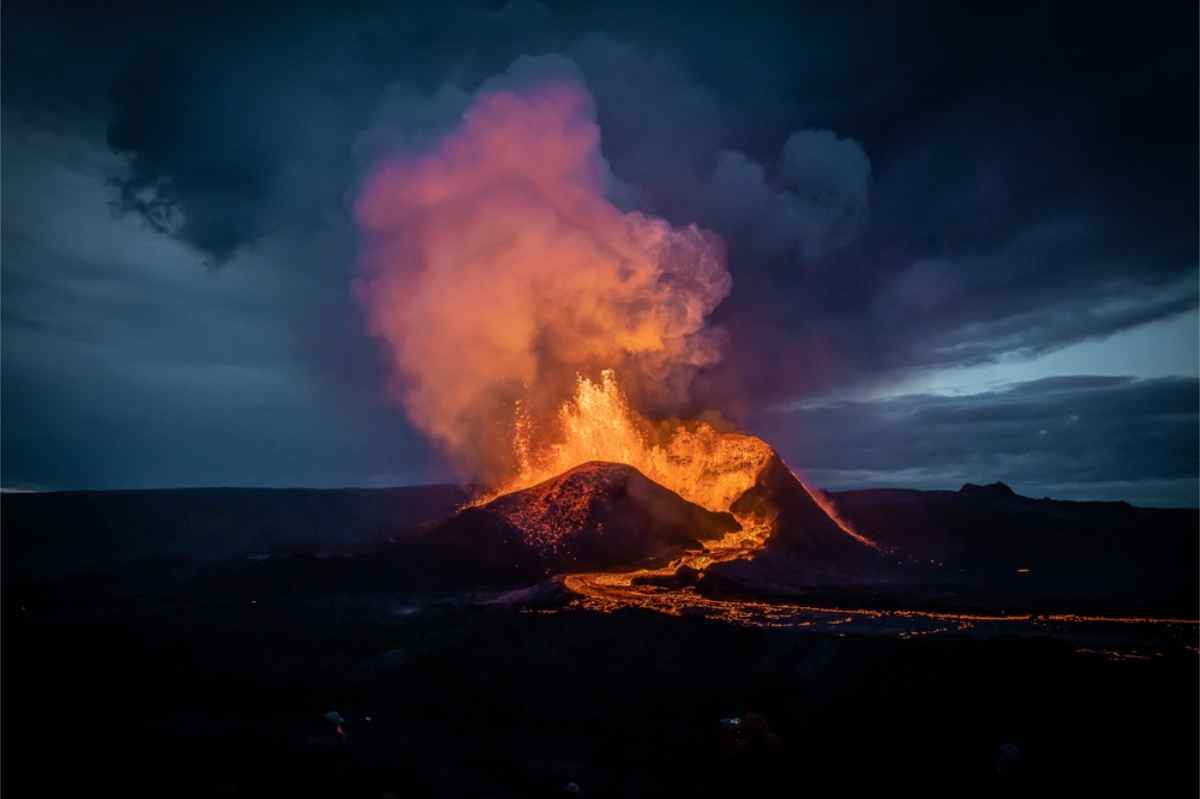
What to Do if You Get Caught in an Eruption While Driving
Many volcanic eruptions in Iceland give little to no warning before they occur. This means you may end up driving when an eruption occurs. Knowing what to do in these situations can keep you safe and prevent you from panicking.
Pulling Over Safely
Icelandic roads are often narrow with no shoulder, making it dangerous to pull off just anywhere. Even if you are in the midst of a volcanic eruption, look for a safe place to pull over, such as a parking lot, driveway, or designated pull-out. Once you pull over, turn on your hazards and leave your headlights on to ensure better visibility.
Communicating Your Location
One of the most challenging aspects of dealing with getting caught in a volcanic eruption is communicating where you are. The 112 app is one of the most useful tools for this situation. Using the app will automatically send your GPS location to the authorities to ensure they can find you when they send help. This app works, even if your signal is weak.
If you don’t have the app, you can also call 112. Before you do, make a note of the GPS coordinates from your phone. If you don’t have that, check for a route number, kilometer marker, or any notable feature nearby. When you speak to the operator, be clear about who you are, what vehicle you are driving, and as much information as possible about where you are.
Waiting It Out or Evacuating
When a volcano erupts in Iceland, you have two primary choices: wait it out or evacuate. The right answer depends on how close you are to the eruption and how dangerous it is if you stay where you are. Your accommodations and local authorities will play a key role in making that choice.
If you are within 20-30 kilometers of an eruption or in the projected lava flow path, it’s typically best to evacuate. The Icelandic authorities will determine the safest evacuation routes in volcanic eruptions by projecting the likely path of the lava flow. The level of ash fall can also determine whether you should stay or go. Staying where you are is best when the ash fall is light, but if it’s heavy, it’s likely better for you and your vehicle to leave.
The wind direction and potential for gas exposure are other factors. If you are in the projected path of the gases and can’t seal off the building, you may want to consider evacuating to remain safe.
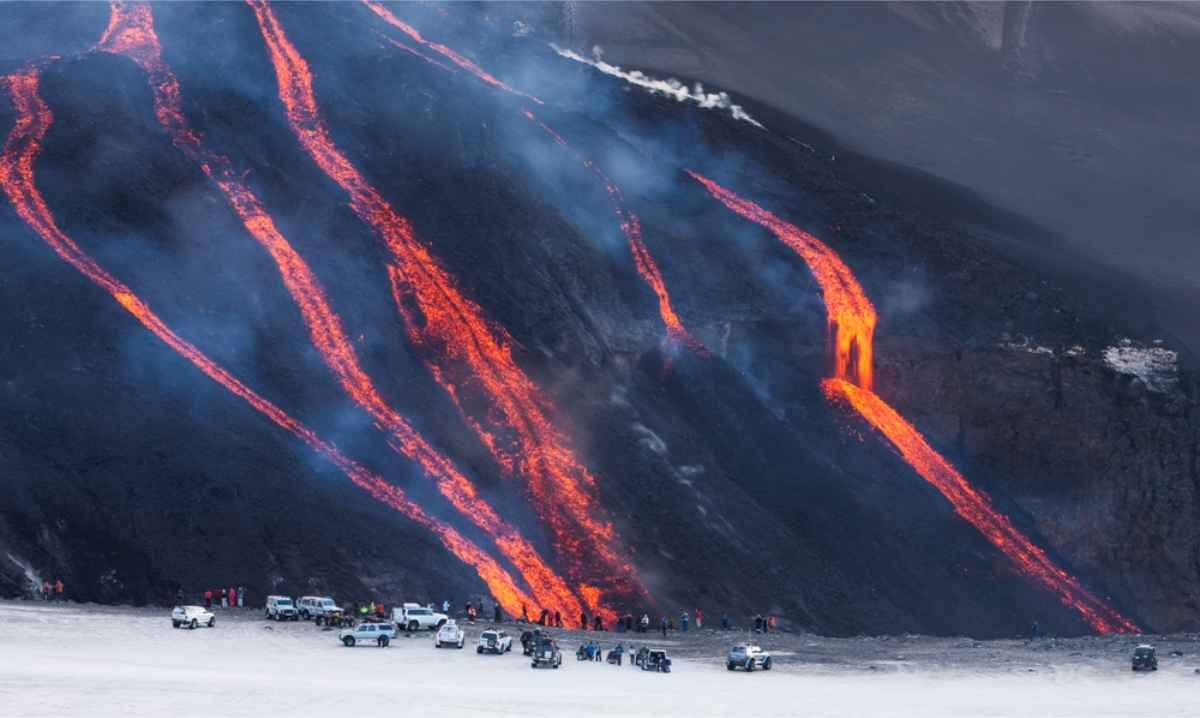
Safe Evacuation Routes and Emergency Protocols
While you shouldn’t let the potential for a volcanic eruption stop you from visiting Iceland, it is important to be aware of safe evacuation routes and emergency protocols. In general, the authorities aim to keep roads open as much as possible, but if they do close, they help guide drivers toward a safer route.
Most accommodations and tourist activities have emergency protocols in place to guide visitors to safety. If you are required to evacuate, it’s likely there will be emergency shelters open for those who don’t have anywhere else to stay. Don’t be afraid to ask for help if you need it.
Staying Connected and Sharing Your Itinerary
Maintaining contact with your family or friends is vital, so someone always knows where you are in case you lose contact during a volcanic eruption. You should consider leaving your itinerary with someone you trust as well. If you don’t have someone, you can register your itinerary with SafeTravel. If you fail to check in, they know when and where to send help.
Respecting the Environment During Eruptions
Environmental responsibility is a big deal in Iceland, even in the midst of a volcanic eruption. One of the biggest rules in Iceland is to stay off the moss. While this may not always be possible when evacuating from an eruption, you should avoid it whenever possible. You should also stick to marked roads. No matter the situation, off-road driving is strictly prohibited.
Most Common Questions About Driving During a Volcanic Eruption
Can I drive during a volcanic eruption in Iceland?
In short, yes you can drive during a volcanic eruption, but it depends on the type of eruption and your location. Fissure eruptions typically don’t cause disruptions for drivers, while explosive or sub-glacial eruptions will disrupt driving in a larger area.
Will roads be open during an eruption?
Most roads will remain open during a volcanic eruption as long as they aren’t threatened by ash fall or lava flow. Roads are more likely to close in the immediate area of an eruption, unless the ash is falling over a larger area. Keeping up with current road conditions will help you avoid these closures.
Can volcanic gas hurt me while driving?
Volcanic gases are an unseen danger of volcanic eruptions. These gases can enter your vehicle while driving if you don’t take the proper precautions. Keep windows closed and use the recirculation feature. You should also avoid low-lying areas and leave the area as soon as possible.
Will I lose phone signal during an eruption?
The correct answer is maybe. In some situations, the phone signal can be disrupted, leaving you without a way to contact anyone or plan your route. Downloading offline maps and having a paper map in the car will help avoid these issues.
Last Tips Before You Hit the Road During Eruption Season
Driving during a volcanic eruption can be stressful, but not all eruptions will cause a disturbance to your trip. Regardless of whether one erupts during your stay, you should brush up on safety tips for volcanic eruptions before you go. Knowing what to do during a volcanic eruption is the best way to stay calm and keep you and your traveling companions safe, especially if you rent a car in Iceland and drive yourself.




